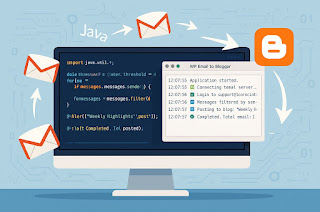Simply put B2B Integration means the integration, automation and optimization of key business processes that extend outside the four walls of a companies organisation.
For example receiving purchase orders from your customers electronically, you can process order information faster and more accurately. Processing these orders in real time allows companies to be more responsive to their customers, improve customer service and increase sales. Similarly, by connecting to external suppliers electronically, companies can achieve real time views into the visibility of global shipments, automating the warehouse or distribution centres and optimising inventory or stock control – ultimately increasing working capital and lowering costs
B2B Integration began with large companies mandating methods of receiving business information technology. It evolved through the widespread adoption of Electronic Data Interchange (EDI) and in recent years has benefited from technology innovations e.g. the advent of the Internet, XML, web services and SOA, Business Process Management and SaaS. These innovations have led to increased benefits being made available to companies of every size. As we explore in this Microsite there are a number of ways to implement B2B Integration solutions.
In this area, I found new B2B tool called Adeptia EDI Accelerator
ABOUT EDI ACCELERATOR
If two business entities need to exchange EDI data, they can seamlessly do it using the EDI Accelerator. These
entities are referred to as Trading Partners of each other.
The EDI Accelerator enables you to configure new trading partners quickly via an easy-to-use interface. By using
this interface, you can setup inbound and outbound relationships with each trading partner to quickly respond to
different EDI messages. For each trading partner, you can setup number of translation rules to process different
incoming EDI messages along with the ability to create outbound EDI messages.
When EDI Accelerator receives data from one trading partner, you need to create an inbound relationship,
wherein, it receives data from that trading partner and then processes it. In order to send data to the other trading
partner, you need to create an outbound relationship, wherein, it receives data stored in the file system, processes
it into a format compatible to the other trading partner and then sends it to that trading partner.
ARCHITECTURE OF EDI ACCELERATOR
The architecture of EDI Accelerator is as follows see Figure 1.
 |
| Figure 1: EDI Accelerator Architecture |
The EDI Accelerator supports direct exchange of data using File and FTP protocols. In a case, where the trading partner is using a protocol other than File or FTP, third-party software, namely VL Trader Host is used. This host will receive the data from the partner’s protocol and send it to EDI Accelerator on a local file system or FTP location. For inbound processing, VLTrader receives the data from any trading partner and download it into its configured mailbox.
The EDI Accelerator picks the data file from the inbox folder of VL Trader mailbox and starts its inbound processing. It splits the file into transaction sets and inserts them into the EDI database. It now processes each transaction set one by one. Once this EDI translation is done, the translated data is placed in the File System. This data can now be sent to the back-end application using a process flow. Refer to inbound flow in Figure 1.
For outbound processing, EDI Accelerator picks the data from the File System (sent by the backend application using a process flow) and starts its outbound processing. It translates the data and splits it into different records, based on the Application ID (used to identify the Trading Partner for the specific data). Once it translates the outbound data, it puts it in the Outbound Queue. Transactions in this queue are processed when a batch schedule is run. Then, the EDI Accelerator picks these transactions, creates GS and ISA Envelopes for them, and sends them to Partner using File or FTP protocol of Adeptia Suite. If VLTrader Host is being used, then they are sent to the outbox folder in VLTrader mailbox, from where they are sent to Partner.



Excellent overview! I’m curious though—how does ICaaS handle real-time data streams compared to traditional ETL tools? Would love to hear your thoughts on that in a future post.
ReplyDelete